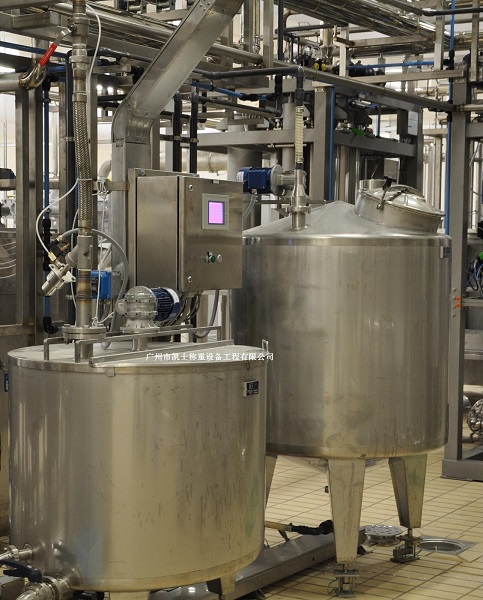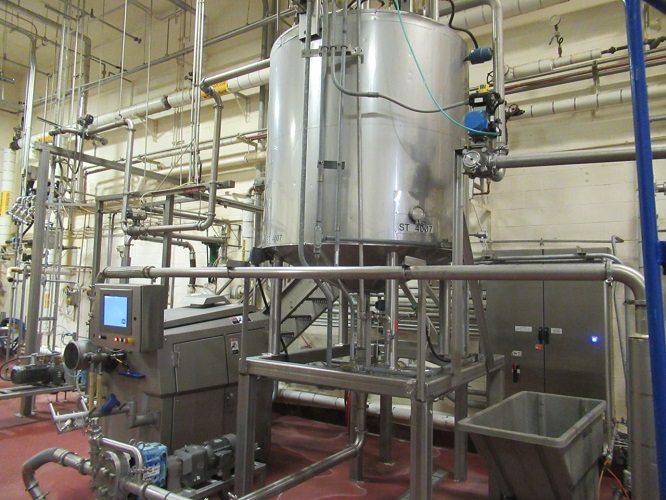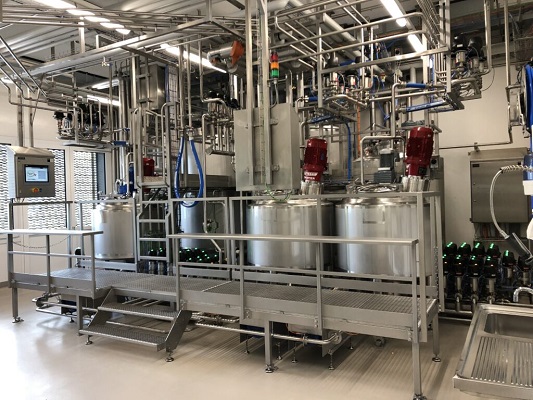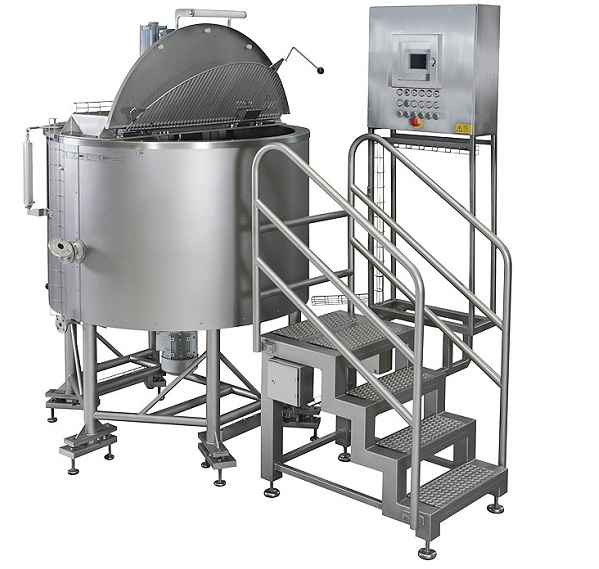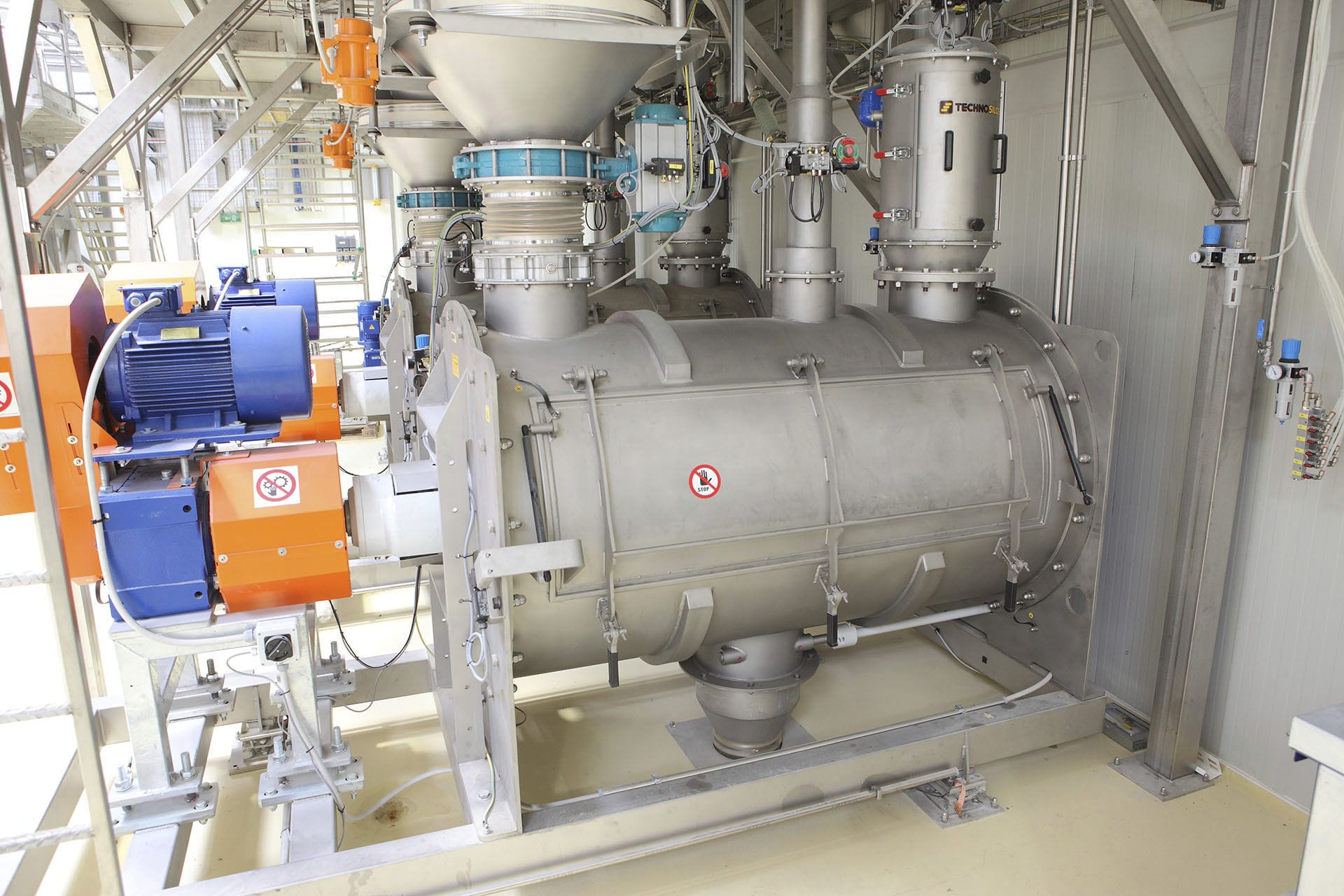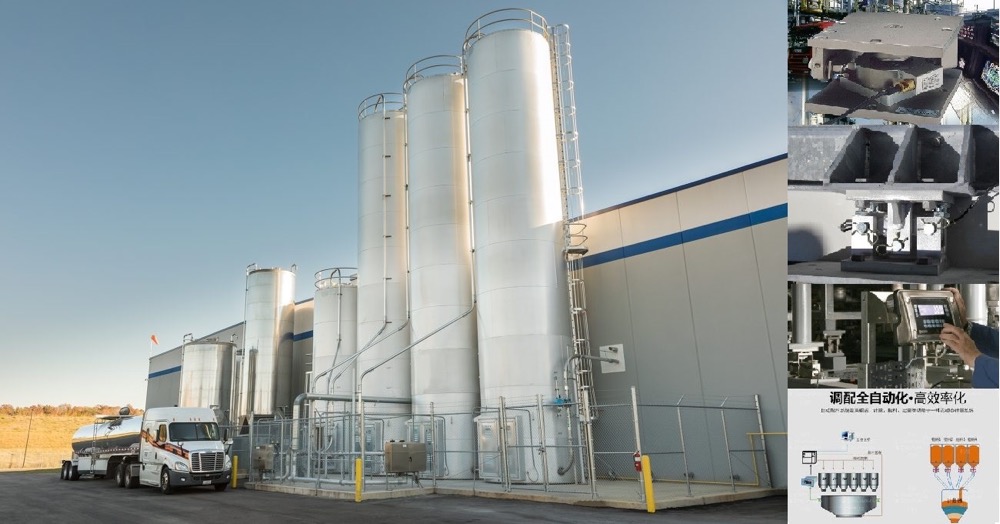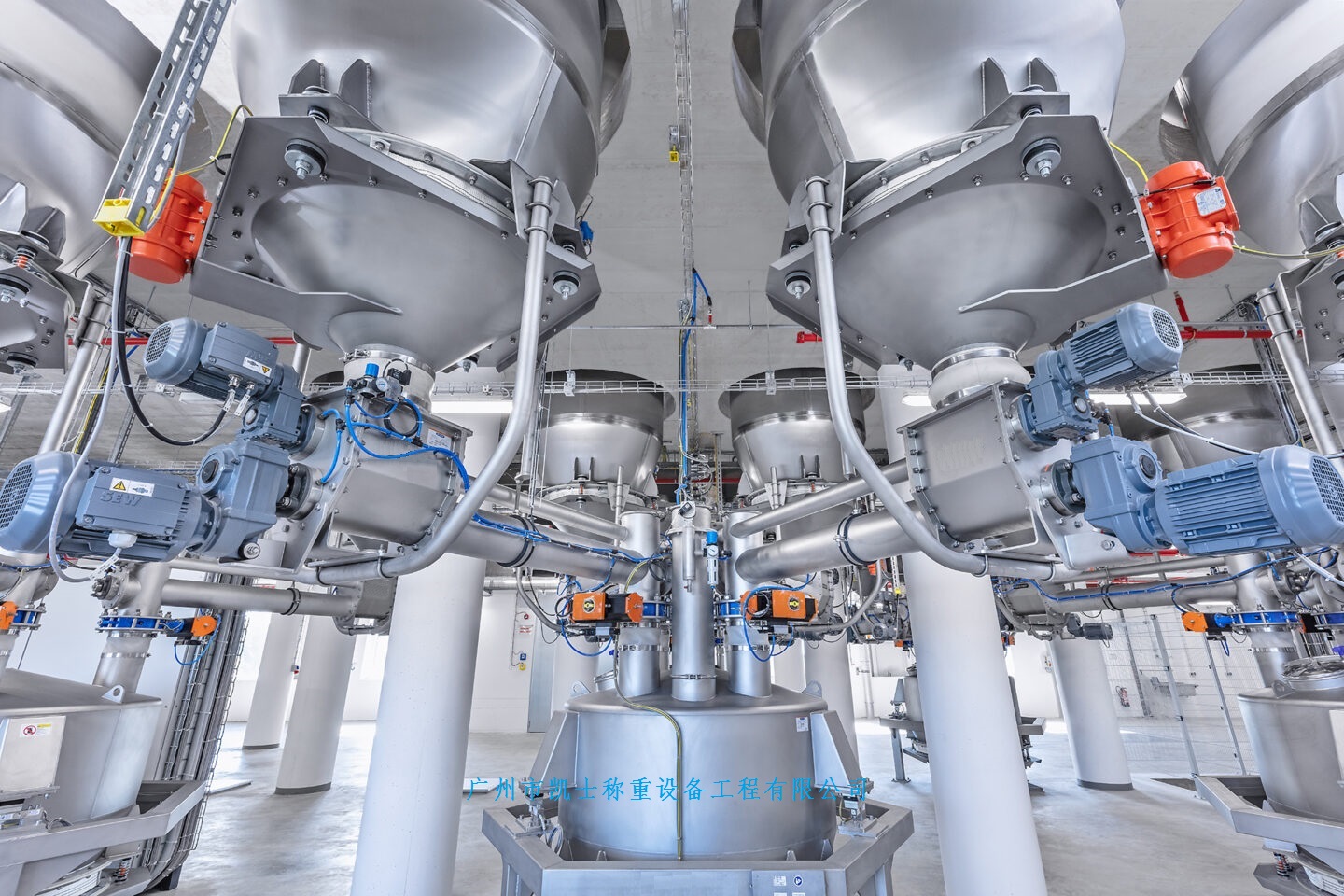

 2020.02.13
2020.02.13Summary:To solve the problems of low batching accuracy and low efficiency in the original feed factory, a two-level distributed microcomputer batching control system was adopted. The town designed the software and hardware of the batching system, and used PID control to dynamically control the algorithm to improve the batching accuracy. Adjust control parameters.Achieve higher control effect.
1 System structure and hardware design
There are many problems in the original dosage system
1) Most of the dosage system adopts fast and slow feeding mode, mostly single material working mode, can not realize continuous dosage, low production efficiency.
2) Most of the traditional control algorithms can not meet the requirements of high-precision dosage.
3) Most of the batching site working environment is harsh, high intensity and dusty, causing great harm to the body of the workers. Based on the above requirements, the new batching control system must meet the following requirements:
1)Improve the working environment of workers, reduce the labor intensity of workers and improve the production efficiency.
2) To be applicable to a variety of formulas and continuous batching, with formula management functions, can be established at any time to modify, or delete the formula.
3) Real-time data collection, with recording, printing, querying and other functions.
4) Real-time monitoring of the continuous production process, at any time to find anomalies, issue an alarm.
5) With storage function, display historical data.
This system adopts two-level distributed microcomputer dosage control system, the upper computer adopts microcomputer to realize centralized management of the production line, through the upper computer, it can realize man-machine communication to monitor the production process in real time, collect the data in real time, classify and store them, and produce all kinds of historical reports. The upper computer and the lower computer use RS-232 or RS-485 serial bus for communication. The lower computer adopts PLC as the core controller to realize the quantitative feeding of materials.
The upper computer adopts industrial Advantech industrial controller, which mainly accomplishes the following tasks:
1)Human-computer interaction and management;
2)Real-time monitoring;
3)data storage and confidentiality;
4)Alarm;
5)printing;
6) communication.
Feeding system site controller using S7-200PLC control: output control volume control feeding system fast and slow feeding, feeder start and stop, bin door switch and other related control switch action, in addition to accepting from the upper computer to send the relevant dosage volume, so it is the core of the feed proportioning system control device.
The frequency converter is an asynchronous machine that accepts the control instructions sent by PLC and adjusts the motor speed of electromagnetic vibrating feeder to realize variable speed feeding. We use Siemens MM440 frequency converter.
The feeder uses electromagnetic vibration feeder to control the material speed according to the frequency change. The load cell is used to measure the weight of the material in the hopper in real time. Considering the precision of weighing and the selection of the load cell's range, it adopts three BHR-4M strain load cells in parallel to form a group of scales.
The weighing sampling interface is used to filter, amplify and convert the weighing signals from the load cell into digital signals after sending them to the CPU, which mainly includes filters, amplifiers, analog/digital converters, and control command registers, etc. Among them, the amplifiers adopt ultra-low drift, and the analog/digital converter is used. Among them, the amplifier used ultra-low drift high-precision operational amplifier OP07. In order to ensure that the system's data acquisition accuracy, analog / digital converter using the United States MAXIM analog-to-digital converter MAX111 chip, with: 14-bit resolution does not require an additional component to solve the problem of temperature drift and time drift, the use of internal calibration technology; linearity of 0.05%, good performance, can be used for the occasions requiring high precision. Applicable to occasions with high precision requirements.
The power supply circuit is used to convert AC power into stable DC power that meets certain requirements, and it is the energy source of the whole system.
In the automatic feeding system, the communication between the upper and lower computer adopts RS485.
In the feed production site a variety of interference problems are very prominent. This system has taken the following anti-interference measures in hardware. Capacitive filtering, shielding transmission, photoelectric coupling, weighing bucket exhaust, interlock control. The design of all hardware to meet the necessary requirements of the system must also take into account the design of the software, so that the design of hardware and software to make the whole system to achieve the best cost-effective.
2 Software design
The system software includes the design of the upper computer software and the design of the lower computer software. The upper computer software includes the design of system monitoring software and control interface, and the lower computer includes the application of software anti-interference technology such as PLC programming, data acquisition software filtering. The whole system software design using modular design, easy to use, maintenance, so as to improve the control and management of the entire control system performance
The software design of the lower computer mainly considers the real-time acquisition and transmission processing of weighing signals, and the timely and accurate transmission of various switching signals and control quantities. Therefore, the software design should consider the writing of PLC control program, data acquisition and the corresponding software anti-interference technology. Due to space limitations below mainly gives the whole dosage software flow chart as shown in Figure 2
The upper computer operating system selects windows xp, the database selects access2003, and the monitoring software adopts the configuration king (KingView) to monitor the site in real time. Including the main monitoring screen design, user encryption settings, production batch settings, etc. and through the configuration software to realize the upper and lower computer communication. VB6.0 is used to realize the control software design, and it mainly completes the recipe management, batch setting, scale management and other equipment management in the form of good human-machine interface.
3 Control algorithm to improve the proportioning accuracy
The feeding system adopts frequency converter to control the feeding speed of the magnetic vibrating feeder, the material is poured into the weighing hopper through the feeder by feeding type, when the feeding equipment stops the action of the moment, there is still a part of the material in the air does not fall into the weighing.
Hopper, this part of the material to become the fallout, the size of the fallout with the different characteristics of the material and different, which results in the final measurement of the weight does not match the set value, which is also the dosage error generated by the most important reason is also the most difficult to eliminate. Through the analysis of the dosage system to establish a mathematical model is as follows, the model involves parameters such as the diameter of the hopper, height, feeder parameters can be measured, but the weight of the material capacity of the air column unit volume of the weight can not be determined, will be different with the temperature, humidity and material, so the use of traditional PID control can not meet the requirements of high-precision, the text adopts the introduction of ant colony algorithms based on PID control, ant colony algorithm is based on the characteristics of different materials, so the traditional control can not achieve high accuracy. The ant colony algorithm is a bionic algorithm based on the bionic evolutionary algorithm proposed by a bionic class algorithm originated from the biological world of nature, and it gets good results in many optimization problems with good robustness, flexible algorithms, and can easily be applied to other problems that can be expressed as optimization on the chart, so the PID control can be dynamically adjusted by optimization through the ant colony algorithm, and the steps are as follows:
1) Firstly, the three parameters to be optimized, KP, Ti and Td, should be expressed in the form of a graph, and 5 effective digits should be used to represent each parameter, in which there are 4 digits after the decimal point and one digit in front of the decimal point, and an array should be set up for each ant, which has 15 elements representing the values of the vertical coordinates that the ant walks through.
2) Place m ants in their respective initialization regions and place the point to each ant in tabuk according to Eq.
(2) shown transfer probability move.
3)Whether the tabuk is full or not, yes continue down, no go to step (2)
4)Record the objective function J for each ant (i=1, 2.... -m) and record the PID controller optimal solution.
5)Update the ant pheromone update rule as given in equation (3).
6)Cycle number Ni+1.
7)If Ni is less than the predetermined number of iterations then move to step 2.
8)Output PID control optimal solution
Where the objective function . To be able to reflect the performance of the controlled system, the performance of the control system is reflected in the stability, accuracy and speed, so in this we use the system unit step response when the steady state error e., the rise time t and the adjustment time t. as a measure to construct the objective function.
4 Conclusion
The design has been successfully passed the test and put into production use, running for several months in the dosage process weighing error maximum of 0.2kg, minimum of 0, to achieve the desired effect of the plant since the transformation, not only the dosage accuracy has been improved, the output has also increased by 80%, the entire dosage system personnel by the original 8 people reduced to 2 people, reducing the cost of production, and the workers do not have to work for a long time in the noisy, dusty production site. The system is designed for the feed preparation, although the system is designed for the production of feed. Although the system is designed for feed proportioning, its automatic weighing process is suitable for many kinds of batching occasions, such as metallurgy, ceramics, medicine, building materials and so on, and can also be applied to various packaging production lines, which can achieve a better control effect.


















